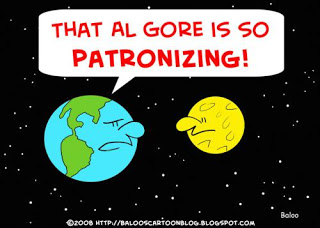Many scientists say we have global warming. They point to some exceptionally hot years and other evidence. Many climatologists are now making the case for global cooling as well. Record low temperatures and record high snowpacks the past 2 years, and decreasing solar activity appear to be their key arguments.
This article will not take sides. After reading this brief article you will have enough knowledge to decide for yourself.
Climate history is fascinating stuff !
Reading this will give you a solid understanding of Earth’s main climate history that is currently known and proven.
With this knowledge you can better analyze the competing claims about cooling and warming and put them in perspective.
Let’s just call this article…
…”The 5 minute Climate Scientist”
As you view the climate history graphs you will notice that climate is never ‘stable’. You will learn that both global warming and global cooling have happened hundreds of times previously.
Earth is always warming or cooling in somewhat predictable cycles, or it is in a brief transition from one cycle to another.
The Ice Core Data –
Prehistoric snowflakes acted as memory cards:
Several projects have been undertaken that involve drilling extremely deep holes into the Arctic and Antarctic Ice. All of the ice started out as snowflakes, falling through the atmosphere. It is not frozen sea water.
As the snow piles up it compresses into ice. The snow has been piling up and turning into ice for over 500,000 years. Gas bubbles and other particles trapped in the ice have allowed scientists to recreate the atmosphere and temperature history going back over 450,000 years. The two main Ice Core projects were the Vostok and EPICA deep ice core surveys. The temperature data is accurate to better than 1/100th of a degree.
Ocean Sediment Cores:
Ocean sediment cores also trap gases and isotopes, allowing Geologists to create an extremely accurate climate history going back millions of years.
Long Ice Ages and Shorter Warm Intervals:
As you view the climate history charts you will see a clear ongoing pattern of long ice ages (glaciations), separated by comparatively brief warm intervals (interglacials).
We are currently living our lives during a warm interglacial, between ice ages, called the Holocene.
The Holocene started with a massive warming event about 12,000 years ago. That was a good thing because the ice was several kilometers thick and it covered Canada, the UK, Northern Europe, and almost half of the USA.
Climate Of The Last 5 Million Years:
See Graph: 5 Million Years of Climate Change
Note: The present is the right side of the graph.
1.The pattern of ongoing warming and cooling is obvious.
2. The overall trend is downward. The ice ages (glaciations) are getting colder.
Climate of the Last 450,000 Years:
See Graph: Vostok-EPICA Ice Core Data
Note: Everything below the dotted line (Zero degrees C) represents glacial Ice Age Conditions. The warm spikes are so consistent it almost looks like a heartbeat monitor.
1. The spikes on the graph are the warm interglacials.
2. The spike on the right side of the graph shows our current Holocene interglacial.
3. The Ice Ages (below zero degrees C) last about 90,000 years on average.
4. The warm interglacials (above Zero degrees C) last from 6,000 to 12,000 years.
5. Our current Holocene Interglacial is the coldest interglacial recorded in the past 450,000 years.
6. 125,000 years ago during the last interglacial (Eemian interglacial) it got much hotter than today’s climate. At that time our early human ancestors were still in the stone age.
Climate Of The Last 12,000 Years:
See graph: Holocene Interglacial Temperature History
1. The climate history shows that Holocene temperatures peaked about 8,000 years ago.
2. The recent temperature rise following the Little Ice Age (1650-1850) is in line with – or less than – the many other global warmings during the Holocene.
3. These interglacials only last 6,000 to 12,000 years.Then Mother Nature will take us into the next ice age glacial which will last about 90,000 years.
Note: The Holocene warming was accompanied by a sea level increase of over 350 feet.
See Graph: Holocene Sea Level Rise
After pondering the ongoing climate cycles the statements “humans cause global cooling” and “humans cause global warming” become questionable at best. How can anybody say such things about warming and cooling cycles that have been ongoing for millions of years, way before humans came along?
Sure, we have trashed out our environment, depleted our oceans, etc., etc., but it is unrealistic to assert that humans can control the climate one way or the other. Some things, like climate change and continental drift, are natural phenomena that are way beyond human control. The belief that “humans can control the climate” is based on both undeserved bravado regarding human capabilities, and complete disregard of the known climate history. Anybody who believes that new taxes will create a stable climate is kidding themselves.
But what about CO2?
see Graph:
600 Million Year CO2 and Temperature History
1. During the late Ordovician Period CO2 levels were 10 times higher than today’s CO2 level, but Earth went into a long Ice Age period.
2. Current CO2 levels are at the low end of the scale when viewed in a historical perspective. CO2 is presently only 0.038% of the atmosphere. Natural water vapor causes 95% of the greenhouse effect.
3. Claims that “today’s CO2 level is the highest ever” are flat out lies, and they indicate the speaker has no knowledge of Earth’s proven climate history.
